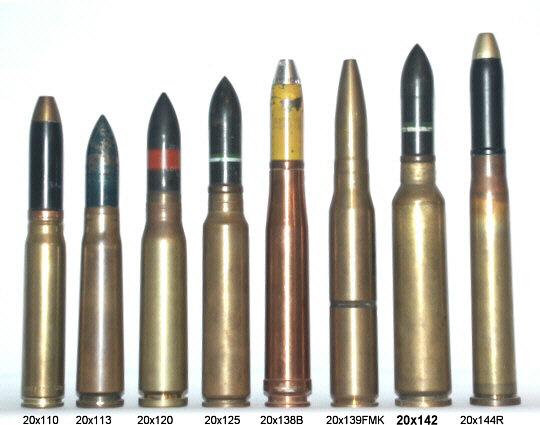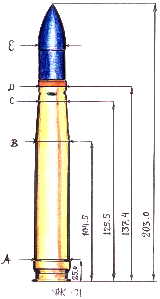The 20 mm Lahti L-39 antitank rifle:

The design and production of a domestic anti-tank rifle for the Finnish Army was delayed in the late 1930s by doubts and differences of opinion over which caliber to adopt. Initially a 13 mm caliber was the favorite alternative but in 1939 a decision was also reached to also construct two 20 mm weapons for tests in mid 1939.
The design work was given to Aimo Lahti who had two 20 mm prototypes produced during the
summer. They were then tested. Theoretically, the difference of muzzle velocity and penetration between the 13 mm and 20 mm wasn’t big, but the 20 mm round had superior fragmentation
effect when it penetrated the armor.
[LEFT] [/LEFT]
[/LEFT]
[LEFT]On August 11th 1939, the L-39 performed well, fulfilling all requirements, and on the basis of these superior results the 20 mm weapon was selected and further development of the 13 mm rifle was
dropped.
On September 6th, 1939, General Heinrichs finally proposed that the production of this good weapon should start immediately.[/LEFT]
[LEFT]Before the production of the weapon was started, the Winter War broke out, as the Soviet Red Army attacked on November 30th, 1939. The two L-39 prototypes were first used on the Isthmus front*, near the Lake Ladoga. The weapons were issued to the AT-platoon of JR 28, and the platoon was subordinate to Os.Metsäpirtti (detachment Metsäpirtti), which was part of the delaying / covering troops of the Rautu (R-) group. The two prototype weapons were used with great success against the light Soviet tanks, and the weapon was reported to be effective at ranges of up to 400 metres[/LEFT]
[LEFT]* Source “Marskin Panssarintuhoajat” by E.Käkelä. Some other sources say that they were used in Ladoga Karelia 2 men were required to carry this weapon off road. During winter, a sledge was used, and on road marches a vehicle was used if available.[/LEFT]
After the Winter War
Later on, the L-39 received improvements e.g. night sights, AA-sights and a targeting scope.
In the attack phase in 1941 the 20 mm round proved to be too weak against most types of tanks. As the L-39 proved to be a very accurate weapon it was often used to destroy enemy gun positions, mg-nests etc. at long range.
Beginning on 1944, the L-39 was also used against the armored ground attack planes. A new pillar mount was designed and the rifle was fitted with extra recoil spring and a fixed striker for full automatic operation. This full automatic AA-weapon was designated as L-39/44.


http://www.winterwar.com/Weapons/FinAT/FINantitank2.htm#20
Aditional Pictures:

The member Tankgeezer with his Lahti L-39 ( you better dont fight with him)










